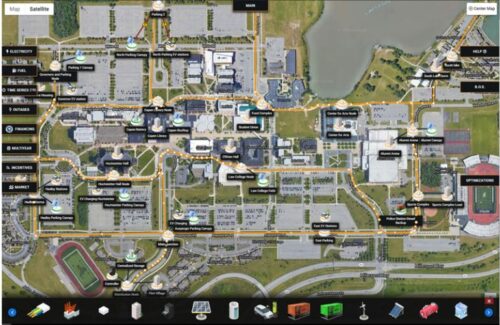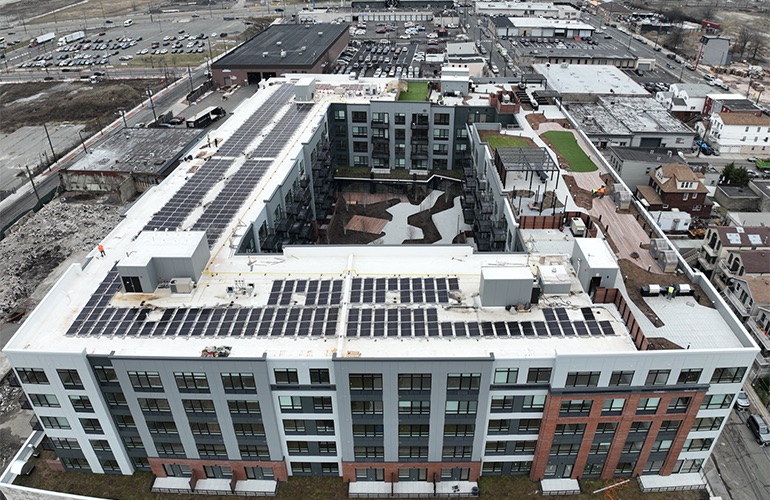Xendee releases new multi-node feature for designing advanced microgrids
 To help meet the engineering challenges of large microgrid projects, Xendee has released a new multi-node feature that enables users to create advanced, interconnected microgrid networks from a constellation of smaller microgrids or DERs that can support up to 25 technology types including solar PV, battery storage, hydrogen, hydrokinetic and more. The multi-node feature enables the use of multiple nodes (a bus bar where multiple technologies or loads can be circuited together) and utilizes real-world location data of each point to optimize the final design and investment strategy. This allows for a more realistic model of communities or campuses and allows energy to be generated, used and transferred in the most efficient manner.
To help meet the engineering challenges of large microgrid projects, Xendee has released a new multi-node feature that enables users to create advanced, interconnected microgrid networks from a constellation of smaller microgrids or DERs that can support up to 25 technology types including solar PV, battery storage, hydrogen, hydrokinetic and more. The multi-node feature enables the use of multiple nodes (a bus bar where multiple technologies or loads can be circuited together) and utilizes real-world location data of each point to optimize the final design and investment strategy. This allows for a more realistic model of communities or campuses and allows energy to be generated, used and transferred in the most efficient manner.
“Xendee’s new multi-node feature gives engineers the tools to design large scale or interconnected microgrids using the same tools as a normal project,” said Michael Stadler, CTO and co-founder of Xendee. “We are moving past simple energy and economic modeling to allow the design of entire networks of microgrids. These networks can consider cable length, transformer requirements, power flow and the losses due to distribution between the nodes. With multi-node, users can simultaneously satisfy energy and power demands for their systems, leveraging the best possible architecture while saving significant time throughout the design process.”
The multi-node feature allows each node to essentially act as its own energy node, with its own connection to the wider energy system and a bus bar to connect to up to 25 different types of renewable and traditional energy generation sources. The nodes can also be connected directly to building loads, for instance, a large industrial motor. This feature allows Xendee to suggest different functionality methods at particular nodes to help meet high-load portions of the facility. Multi-node can also help users avoid under- or over-sizing distribution equipment and cut costs by placing energy technologies as close as possible to where it will be consumed.
The new feature will benefit several use cases, including modeling microgrids within large facilities, comparing rooftop and cable-fed field installations and examining energy input and output demands based on geographic locations. The multi-node interface can also be equipped with an additional feature that layers power flow and voltage considerations within a model. With power flow included, models can calculate the optimal energy outputs and investment while also considering power constraints on cables or other electrical equipment. The multi-node feature also provides reporting based on each node’s dispatch, power flow, voltage, network losses and a system balance table.
News item from the Xendee Corporation
<!–
–>
Original Source: https://www.solarpowerworldonline.com/2022/09/xendee-releases-new-multi-node-feature-for-designing-advanced-microgrids/














